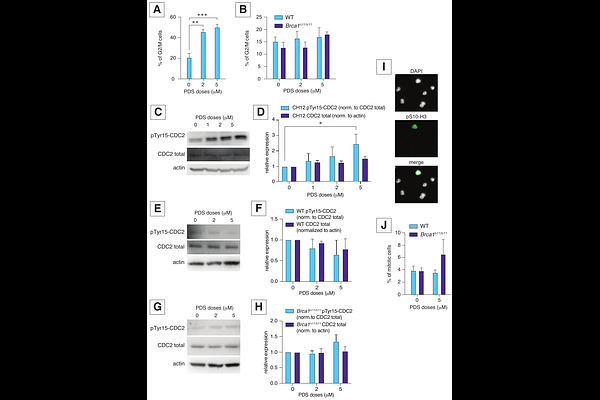G-quadruplex stabilization induces DNA breaks in pericentromericrepetitive DNA sequences in B lymphocytes

G-quadruplex stabilization induces DNA breaks in pericentromericrepetitive DNA sequences in B lymphocytes
Waisertreiger, I.; Ayele, K.; Elshaikh, M. H.; Barlow, J.
AbstractDNA secondary G-quadruplex (G4) structures can impair and even obstruct the DNA replication. Defects in processing G4 structures are associated with replication stress, a common property of both B cell cancers and hyperproliferative premalignant cells. Genome instability arising from replication stress is a hallmark of cancer and strongly contributes to the chromosome rearrangements in B cell cancers. Here, we define the impact of G4-stabilizing ligands on generating genome instability in primary and malignant B cells. Treatment with the G4-stabilizing compound pyridostatin (PDS) causes breaks and chromosome rearrangements at ribosomal DNA and pericentromeric major satellite regions in both mouse primary B cell culture and CH12 lymphoma cells. PDS also causes extensive pericentromeric DNA damage in immortalized human B cell lines. Remarkably, PDS causes high level of tetraploid metaphase cells correlated with high level of dicentric chromosomes specifically in primary but not in CH12 B cells. Unlike primary B cells, CH12 cells undergo checkpoint activation and strong G2/M arrest in response to PDS treatment thus preventing tetraploid appearance. Altogether, these results highlight the difference between primary and malignant B cells in response to PDS, revealing the therapeutic potential of G4-stabilizing drugs to selectively suppress tumor cell growth and proliferation.